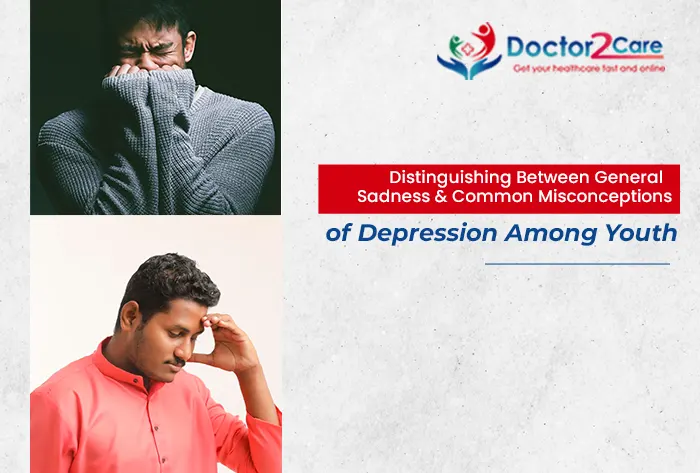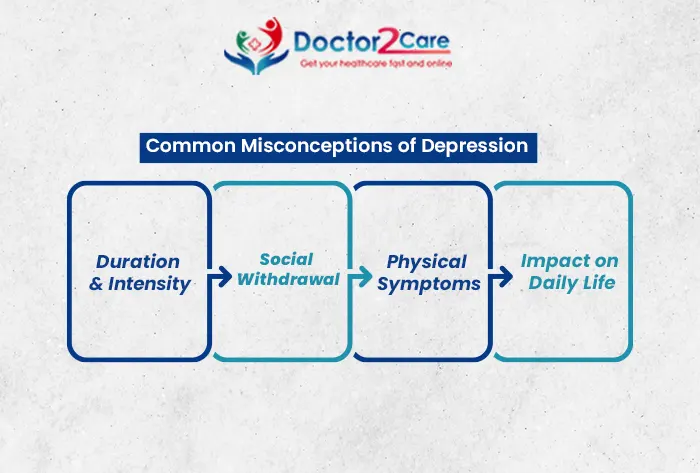Distinguishing Between General Sadness and Common Misconceptions of Depression Among Youth

In the complicated world of feelings, it's important to tell the difference between regular sadness and serious depression, especially in young people. Being a teenager involves strong emotions, and it's hard for both the person and those around them to figure out if their feelings are normal or a sign of mental health problems.
This blog explains the distinctions between everyday sadness and common misunderstandings about depression in young people. It helps you understand when to seek professional help. If you need quick support, consider an online doctor consultation in India. They can provide easy access to expert help for mental health issues in young people.
Understanding General Sadness
Sadness is a universal human emotion, often triggered by specific events or circumstances. It is a normal response to setbacks, losses, or disappointments, and experiencing sadness from time to time is a natural part of the human experience. General sadness tends to be temporary and is usually alleviated with time, social support, and positive coping mechanisms.
Common Misconceptions of Depression
Duration and Intensity:
General sadness is transient, whereas depression persists for an extended period, typically for at least two weeks.
Depression often involves intense and pervasive feelings of hopelessness, worthlessness, and a persistent low mood that affects daily functioning.
Social Withdrawal:
While sadness may lead to temporary social withdrawal, depression often results in a prolonged and significant avoidance of social activities and relationships.
Physical Symptoms
Depression is associated with physical symptoms such as changes in appetite, sleep disturbances, and low energy levels, which go beyond the typical reactions to temporary sadness.
Impact on Daily Life
General sadness may affect daily life temporarily, but depression can significantly impair one's ability to perform daily tasks, leading to academic, occupational, and interpersonal challenges.

Recognizing Warning Signs
Persistent Changes in Behavior:
Look for prolonged alterations in sleep patterns, appetite, and energy levels, as these can be indicators of depression rather than fleeting sadness.
Loss of Interest:
A notable loss of interest or pleasure in activities once enjoyed is a key warning sign of depression.
Difficulty Concentrating:
Depression often hampers concentration and the ability to make decisions, impacting academic and occupational performance.
Expressing Hopelessness:
Pay attention to expressions of hopelessness or feelings of worthlessness, as these are common in individuals experiencing depression.
Wrapping Up
In navigating the complexities of emotions, understanding the nuances between general sadness and depression is crucial, especially when dealing with the emotional landscape of youth. It is essential for parents, educators, and peers to be vigilant about recognizing signs that go beyond typical mood fluctuations. Encouraging open communication, reducing stigma surrounding mental health, and fostering a supportive environment can empower young individuals to seek help when needed.
As we recognize the commonplace nature of sadness, it is crucial to stay vigilant for red flags that could signal depression. Timely intervention and seeking professional support, including online doctor consultation in India, can play a pivotal role in enhancing the well-being and future paths of young individuals. By dispelling prevalent misconceptions and fostering mental health awareness, we can collaboratively contribute to building a society that prioritises emotional well-being among its youth.